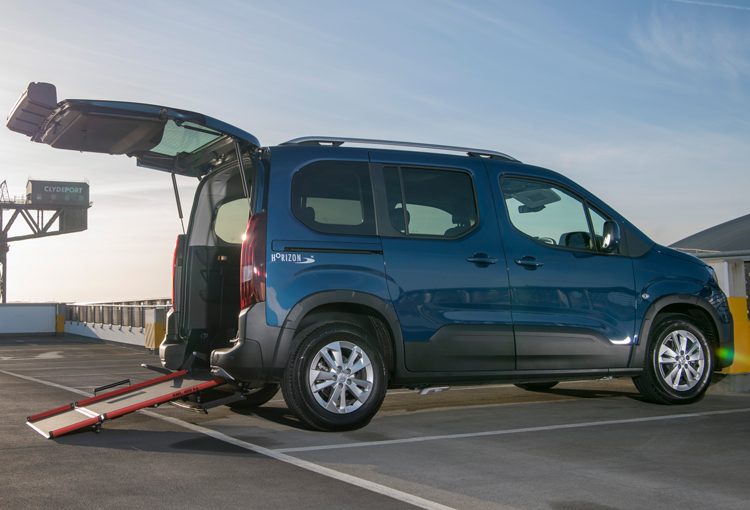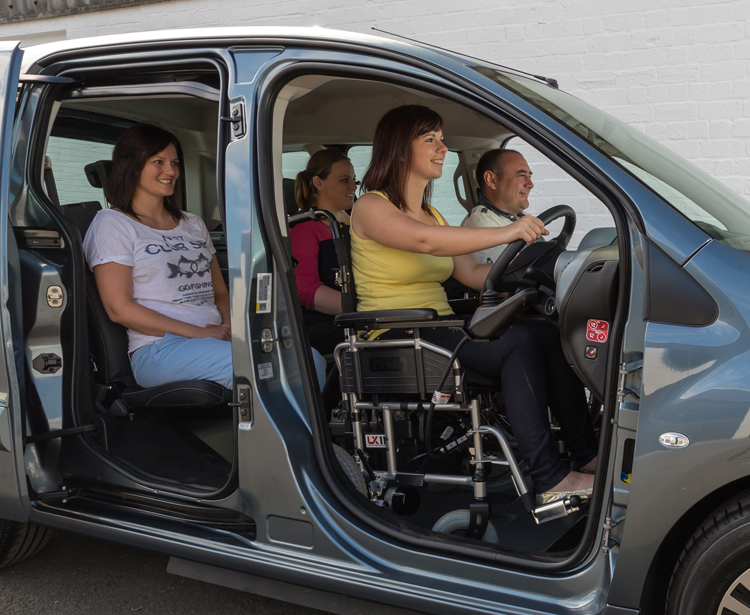GUIDE TO BUYING A WHEELCHAIR ACCESSIBLE CAR

With so many different types of wheelchair accessible cars available it is often difficult to decide which is the right mobility vehicle for you. We have compiled this short WAV buyers guide to help you make the right decision.
(WAV is a common abbreviation for Wheelchair Accessible Vehicle)
SIZE IS IMPORTANT

The most essential factor when considering a wheelchair accessible vehicle is size with access and headroom for the wheelchair passenger being the prime concern. It is essential to ensure that the person you’re buying the vehicle for can actually access the adapted vehicle easily and once onboard have enough space and headroom. Taller wheelchair users, that are wheelchair users who sit quite tall in their wheelchairs, may have difficulty entering the vehicle due to restricted door heights, sitting upright in the vehicle due to low roof heights and also suffer poor visibility due to low windows or windscreens.
WAVs with lowered floors offer an excellent solution for all of the above problems and also offer greatly reduced ramp angles for ease of access. High roof vehicles can also offer improved access for wheelchair users either using a simple on-board ramp, with or without the benefit of a powered access winch, or more commonly a powered wheelchair lift. These tend to be bigger vehicles that probably won’t fit into your garage but do offer additional seating positions if required, which is another important factor.
Tip: Bigger vehicles do offer more space, but they also take up more space and access to car parks may be restricted.
HOW MANY SEATS DO YOU NEED?

Smaller Wheelchair Accessible Vehicles start with just 2 seats plus the wheelchair passenger with 3 seats plus wheelchair passenger being the norm and 4 seats being the exception.
Some compact WAVs may offer 5 seats but normally they require the folding forward of a rear twin seat to achieve wheelchair access (i.e. 5 seats or 3 seats + wheelchair).
MPV sized mobility vehicles tend to come with 4 seats as standard (especially when they have a full length lowered floor) but some offer 5 seats as standard such as our Ford Galaxy Liberty.
Bigger accessible vehicles range typically from 4 to 6 seats with the vehicle size, layout and access method being key whilst large wheelchair accessible vehicles such as our Renault Master AX-S offer up to 8 or even 9 seats as standard.
Tip: More seats normally mean a bigger vehicle which normally means more cost. Try not to overstate your requirement.
LOW FLOOR WHEELCHAIR ACCESSIBLE VEHICLES

Wheelchair accessible vehicles where the floor-pan of the vehicle has been lowered to aid access for a person wishing to travel seated in their wheelchair with access via a fold out ramp. These vehicles also have the advantage of improved visibility and reduced ramp angles. Traditionally just the rear section of the floor-pan is lowered but vehicles are also available with full length lowered floor-pans and up-front wheelchair passenger or wheelchair driver low floor configurations.
Tip: Low floor vehicles have shorter ramps because of their reduced rear floor height.

STANDARD FLOOR WHEELCHAIR ACCESSIBLE VEHICLES

Normally slightly bigger vehicles e.g. VW Caravelle, or Renault Traffic Wheelchair Accessible. They are usually accessed by a fold out ramp at the rear door, an onboard wheelchair lift either at the rear or nearside door or an under floor wheelchair lift at the side door. The major advantage is that they do not require such a high degree of conversion and can usually accommodate more passengers as a result.
Tip: Because they require less conversion these vehicles can have more traditional seating layouts
UP-FRONT WHEELCHAIR PASSENGER

There are a limited number of wheelchair accessible vehicles that allow the wheelchair passenger to sit alongside the driver. These are known as up-front or side by side vehicles. Smaller up-front vehicles are mainly accessed from the rear and have a full length lowered floor, right up to the front passenger position. Because of the difficulty in carrying out this type of conversion they tend to cost considerably more than normal low floor WAVs. Bigger vehicles offer various types of up-front passenger options. Under floor or onboard chairlifts are popular but head-room for the passenger is restricted unless the floor-pan of the vehicle is also lowered, either fully or partially.
Tip: Up-front wheelchair passenger vehicles may have less additional passenger seats.
WHEELCHAIR DRIVER VEHICLES

Typically this type of wheelchair accessible vehicle falls into two categories.
- Drive from wheelchair (where the driveraccesses the vehicle in their wheelchair and drivesthe car whilst sitting in it)
- Transfer from wheelchair (where the driveraccesses the vehicle in their wheelchair and thentransfers to a normal or powered transfer seat to drive) Both methods involve quite complex engineering solutions and these vehicles are generally more expensive as a result with fewer choices being available to potential buyers. Once again, smaller drive from wheelchair vehicles tend to be rear access with the lowered floor extending right up to the driving position whilst bigger vehicles are typically accessed by automated wheelchair lifts and powered doors or tailgates with some sort of automated wheelchair lock-down system and hand operated driving controls. There are also accessible vehicles available that allow the driver to interchange position with the up-front passenger. Tip: Wheelchair driver vehicles do require compromises and may employ somewhat complex operating regimes due to their bespoke nature.



